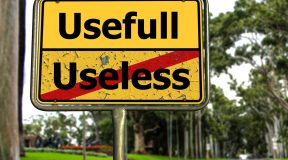In this, our third installment in our series on different types of content, we want to discuss the similarities and differences between webinars and videos. In previous installments, we discussed traditional book publishing and eBooks, and also white papers as compared with case studies.
It might seem odd that we are discussing webinars and videos in a series on content. When most people think of “content,” they are referring to information in written form. But information presented visually is content as well, just presented in a different way.
What Are Webinars All About?

Did you ever make an in-person presentation when you were in school, or perhaps you do that regularly in your work? Webinars are just like those presentations, meetings, and seminars, except that the setting/context is digital (online) rather than being in a physical location, face-to-face with your audience.
As the internet has ballooned in importance, webinars have become a very popular way to reach out to large groups. Unlike face-to-face meetings, there is no need to try to find a venue (location) to hold your meeting, and those attending don’t have to travel — they just sit in front of their computer and watch the presentation take place.
One of the facts of life, when you hold webinars, is that, even if people have to pre-register to attend, many people who want to attend may not be able to actually view it “live” when it airs. Some will be busy with other things, and others may have had every intention of watching live but had something else (of higher priority) suddenly require their attention urgently.
This means that you will need to record your webinar — and offer the recorded version to those who did not attend, as well as for those who were in attendance but who wish to review the session.
Many people stress out about the technical aspects of producing the webinar and forget that webinars must be promoted if they are going to reach your target audience. You should make sure to set up a special landing page where you describe your upcoming presentation and topics to be covered. You’ll need to include a way for people to book their registration. Complete date/time/login details should be given, and you should also capture email addresses to send confirmation emails as well as a reminder email (with login details) to be sent shortly before the webinar begins.
In addition, you should always “get the word out” on social media and through your company blog site, mentioning some of the bigger takeaways. Later on, you can do follow-up summary/recap posts, and also give out links to get the full recording for those who were not in attendance.
How Then Are Videos Different?

The main difference, for many, is in the fulness of the presentation. While any video can be pulled together to present information, the webinar format is usually reserved for presentations that are designed to cover some broad-based topics, and typically also include a question-and-answer session. Videos, for their part, are usually shorter, stand-alone presentations, much shorter in length and not necessarily promoted to your customer/user base.
Videos are a great way to repurpose any older written content. It can be as simple as someone speaking to the audience while looking into a camera lens. They excellent for any DIY related angle.
Important SEO tip: search engines don’t actually “view” videos that you post somewhere (YouTube, your blog or company product pages, etc.). Which means that the content in video format (audio and video) cannot be indexed and ranked.
But there is a way around this! Below your video, make sure that you include a verbatim transcript your presentation, perhaps with video time markers to indicate when you introduce a new topic. When the search engines spider the page they will pick up this content and index it, allowing that page to rank for it.
Tips on Using Videos Effectively

Remember that any time you want to discuss:
• How to solve a problem
• Fix something
• Demonstrate product features
• Document a manufacturing process or equipment usage
Videos allow you to present lots of information in an easily digestible format. For sure, if you need to show a software application works, various settings and menus, etc. the best presentation format is in video form.
Keep your videos short — several smaller vids are better than one super-long one. The reason is that with the longer videos there is an increased chance that someone will get distracted and stop watching.
You can showcase your videos on their own landing page (just like webinar vids), or embed them on other site pages you might have. If you have product pages for an eComm site, for example, you could put a 1-minute video on the page that displays the product from all angles, various sizes/colors, etc.
In summary, when you are thinking about content for your website, remember that “content” can — and should — also include both webinar and video presentations.





